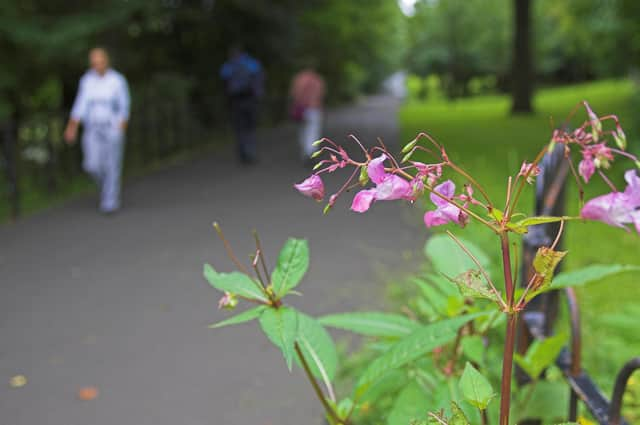Join in City Nature Challenge 2022


This international citizen science project aims to highlight nature in cities and surrounding regions and encourage people to get involved in recording wildlife using a free app over a four-day period.
This year Greater Glasgow and Greater Edinburgh are both included, with boundaries that extend to most of the central belt in Scotland. As well as the cities themselves, Greater Glasgow also includes Renfrewshire, Ayrshire, Lanarkshire, Dunbartonshire and Inverclyde, while Edinburgh covers Clackmannanshire, Falkirk, Fife and the Lothians. For the fourth year the project is being coordinated by RSPB Scotland’s Giving Nature a Home team.
Advertisement
Hide AdAdvertisement
Hide AdIn 2021, 14 city regions across the UK joined forces to activate a national community of almost 5,000 wildlife recorders during City Nature Challenge. Recorders contributed an incredible 62,000 wildlife records to local and national databases, where they are used to inform conservation, management, and research.
Kate Kirkwood, RSPB Scotland’s Giving Nature a Home Project Manager says: “This year’s City Nature Challenge is a great way to discover the wildlife and plants that live where you live. Over the past couple of years many people have found solace in nature and reconnected with their own local areas. Taking part in this recording project will not only help you learn more about wildlife but also contribute useful data to biological records across the country. It’s lots of fun too!”
“We’re encouraging everyone to take part over the four days, it’s a such a good activity to get children involved with and do as a family. You don’t need any previous experience of nature recording – all you need is your phone with the iNaturalist app on it. The only criteria for submitting records is that the photo must be of wild species so no pets or garden plants. You can record what you see from your windows, spot in your flower boxes, find outside in your gardens or balconies or see in your local park or greenspaces.”
Scott Shanks, RSPB Scotland Conservation Officer adds: “I’m a keen wildlife recorder in my spare time and have loved taking part in the last few City Nature Challenge events. The iNaturalist app is very easy to use and I’ve found it handy for the identification of all sorts of plants and animals. Recording wildlife is the key to conservation. It can help map the spread of invasive species, identify biodiversity-rich sites, and you might even find something that hasn’t been recorded locally before. Give it a go!”
Advertisement
Hide AdAdvertisement
Hide AdTo take part people are asked to visit the City Nature Challenge website and download the free iNaturalist app. Then during the four days take photos of the plants, insects, animals, birds, or fungi spotted from windows or outdoors. No expert knowledge needed as the app will help to ID findings, or photos can be shared with the global community that use the app for an answer.
To help find species to record RSPB Scotland suggests attracting birds to your garden by putting up bird feeders, especially if they are closes to bushes or hedges. You can also look for birds from a window. Insects such as butterflies and bees are attracted to flowers, while other invertebrates can be found under logs and rocks. If you have a pond you could do a pond dip with a net. There are lots of nature-based activities that children can do from home on the RSPB Wild Challenge Awards website.
Kate continues: “We’d love to hear about what you find, share your photos with RSPB Scotland Facebook and Twitter using #citynaturechallenge and #cncuk. It’s something that everyone can enjoy and take part in.”